Ravana: Demon from Ramayana & King of Lanka
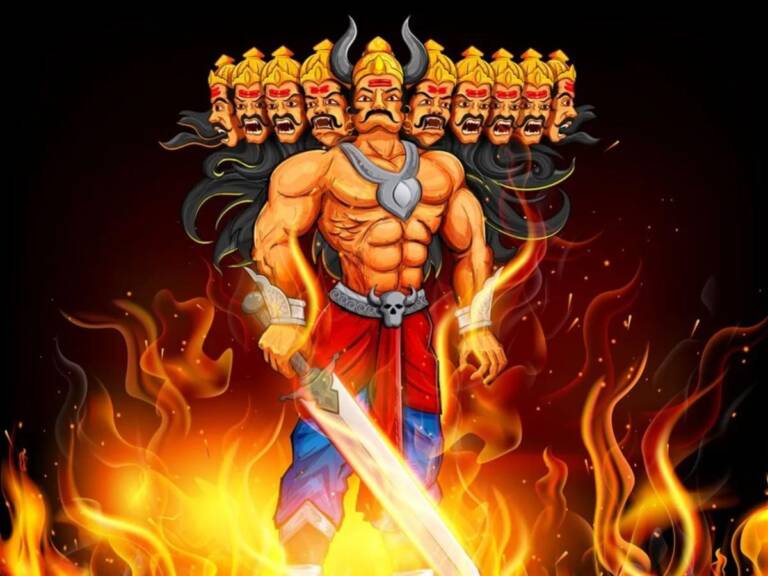
Who is Ravana & his Story?
Once upon a time there lived on the mysterious island of Lanka a strange but mysterious king Ravana- The 10 Headed Rakshasa and was not only a king; He was an educated scholar, a fierce warrior and a devoted follower of Lord Shiva. The story of Ravana was like a puzzle, with many layers waiting to be unraveled. His ten heads symbolized his deep knowledge and wisdom, but they also hid his complex personality. He was a scholar of scripture, a musician, a mighty warrior But it was his infinite ambition and seductive power that led to his downfall. In a foolish moment, Ravana abducted Sita, the wife of Lord Rama, setting the stage for a great confrontation. The spectacular battle between Rama and Ravana was a testament to the struggle between good and evil, righteousness and pride. Despite his great strength and the boons he received from Shiva, Ravana found his equal in Lord Rama. In the end, not only did he have ten heads, but his overwhelming tenacity and confidence made him unbreakable. Rama emerged victorious, loyal to his religion and supported by his friends, and Ravana’s once mighty kingdom collapsed. The story of Ravana reminds us that even a brilliant mind can be clouded by its lust and pride. A cautionary tale that power, without limits and humility, can lead to downfall. Ravana is a complex figure in Hindu mythology, symbolizing the constant battle between good and evil and the consequences of pride.
Factors that led to Ravana Fall
1. Ravana asked for Lanka from Lord Shiva
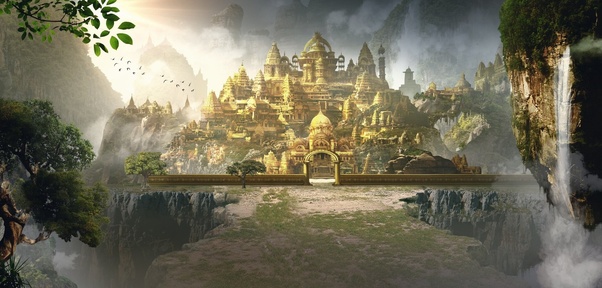
Once upon a time, in the cold, peaceful embrace of the Himalayas, Goddess Shiva’s wife Parvati longed for a warm and comfortable life. He persuaded Shiva to build them a suitable house, an idea alien to Shiva’s ascetic nature. However, he lovingly agreed. Shiva appointed the ascetic Ravana as the project manager and began the construction of the magnificent golden palace of Swarna Lanka To finance this mammoth project, Ravana sought gold for Kubera, his contemporary nephew the richest man. After receiving the gold, the master architect Vishwakarma built a beautiful golden palace. Shiva, following tradition, performed ‘gharpravesh pooja’ before settling in. Ravana, a learned scholar, was invited to become a priest. But Ravana surprised everyone with his reward & asked for a royal fee as compensation. Guided by divine will or greed that was Lanka as “Guru Dakshina” , Shiva was never forced to give wealth, giving Ravana the golden Lanka.
2. Ravana captured all 9 planets

In ancient times the mighty Ravana was mighty He is not merely a ruler; He was an accomplished astrologer and skilled in black magic and tantric divination. His knowledge was so profound that he imprisoned the very planets we call ‘planets’ today. Ravana’s son followed in his father’s footsteps and was exceptionally skilled in perfecting tantra and commanded an army of formidable invisible demonic spirits and on Ravana’s orders these disembodied powers carried out his wishes immediately. Ravana knew no limits to his courage; He captured the powerful god Saturn as well as many planet bound time man.
These celestial beings eagerly awaited the arrival of Lord Sri Rama, hoping to save themselves from the clutches of Ravana. No power in the cosmic realm was strong enough to openly challenge Ravana. Once his son even imprisoned Lord Indra, but it was Lord Brahma who intervened to save Indra. Without stopping, Ravana attacked Yamaloka and confronted Yamarajaji. However, again Brahma stopped Ravana and intervened. Ravana’s influence was so great that he forbade the gods to take their stipulated share and stopped performing Havana, Yajna and Tapas by the respected sages of the earth His arrogance knew no limit due to his profound knowledge of the Vedas in the Because of the Vedas. Ravana, a devoted follower of Lord Shiva, abused his divine powers to kidnap and violate divine beauties. And many captive women in his kingdom, held against their will.
Once he forcibly kidnapped a celestial nymph and brought her to his kingdom. Showing his sheer courage, he even took a flower flight for his elder brother Kubera. Not only did Ravana lack discipline and culture; He was ruthless and everyone feared him. None dared to challenge him in battle. It took the divine intervention of Lord Hari, Sri Ram himself, to provide a solution and rescue the Devas, devis, and his devoted followers from Raavan’s tyranny.
3. Ravana attempt Shaking Mount Kailash Story
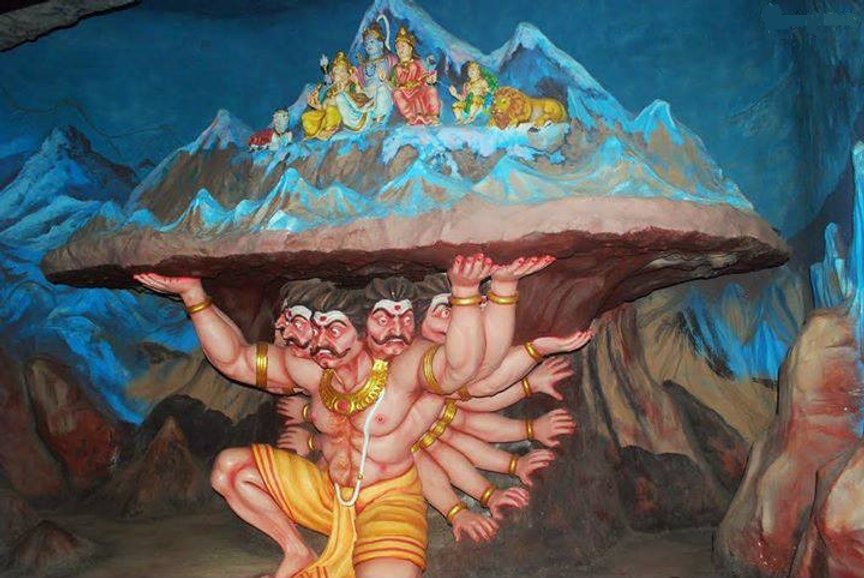
The fearsome demon king Ravana dared to challenge the sanctity of Kailashmansarovar, the abode of Lord Shiva. He had intended to fly over this holy mountain where Lord Shiva and Parvati lived, ignoring Nandi’s warning about the sanctity of the place. Not knowing the limits of Ravana’s arrogance, he mocked Nandi’s faith. In response, Shiva’s faithful bull-faced guardian Nandi cursed Ravana. He predicted that dogs and monkeys would be tools for its eventual downfall. Ravana in despair, attempted the unthinkable He tried with great energy to lift Mount Kailash, known in the Ramayana as “Sumeru” However, Goddess Parvati heard about the commotion and informed Lord Shiva. Shiva calmly pressed his thumb on the mountain and rendered Ravana powerless under its immense weight. A disappointed Ravana sang in praise of Lord Shiva and begged for deliverance because of his devotion touched, Shiva not only rescued Ravana, but also gave him a powerful and invincible sword as a homage to divine favour sign.
4. Ravana had initially decided against abducting Sita Mata
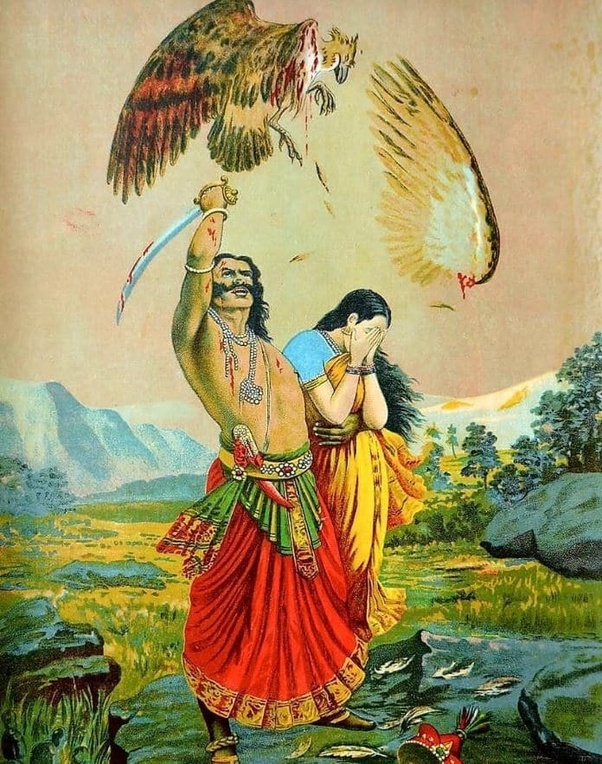
Ravana initially hesitated or reconsidered abducting Sita Mata (Sita, the wife of Lord Rama). This hesitation is often depicted as a result of his admiration for her beauty and virtue. However, his desire for power and vengeance ultimately prevailed, leading him to abduct Sita.
Unknown Facts about Ravana
1. Ravana was defeated by 2 others before Lord Rama
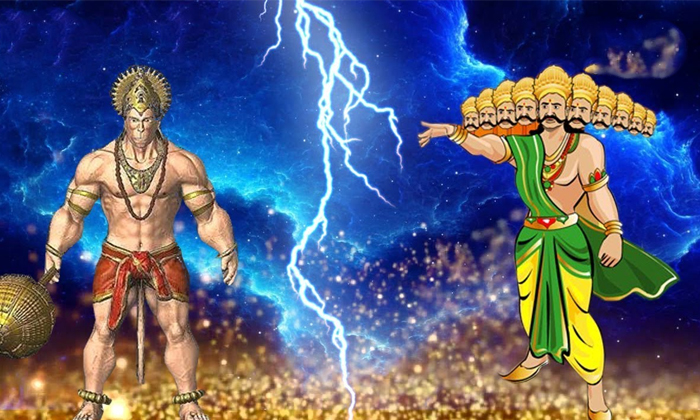

After his legendary battle with Lord Rama, Ravana’s dignity and strength faced humbling challenges from unexpected quarters. Vali, the valiant monkey king, proved a formidable opponent, displaying his strength and cunning. Then Arjuna, mighty Karta, king of Mahishmati, famous for his mighty thousand arms. In both cases, Ravana learned an important lesson in humility, for even the most powerful must bow to the unexpected. These words are a reminder that power, though great, must always be accompanied by respect and humility. Ravana, the complex and multifaceted figure of Hindu mythology was not invincible, these encounters exposed the weakness inherent in his formidable personality
2. Ravana was the great-grandson of Brahma

The lineage of Ravana can be traced from the divine family tree. He was the son of the famous sage Vishrava, who in turn was the son of the creator Pulastya. Prajapati Pulastya is counted among the ten sons of Brahma, the creator of the universe. This distinctive lineage associates Ravana with the high divine hierarchy of Hindu mythology and reflects his royal and philosophical heritage. It is in this idyllic family setting that Ravana’s wonderful blend of character, knowledge and skill in the epic Ramayana comes to life.
3. Ravana performed a yagya for Lord Ram
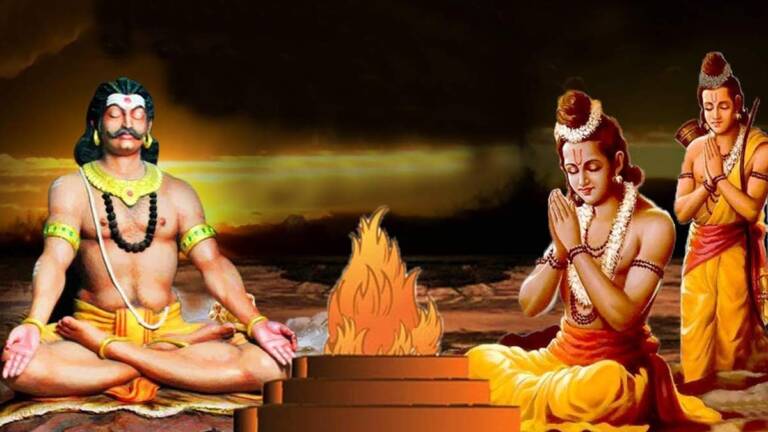
Ravana was a devotee of Lord Shiva, a Brahmin by birth and well versed in rituals. This warm relationship led to a surprising invitation. Vibhishana, Ravana’s brother and ardent supporter of Lord Rama, demonstrated Ravana’s knowledge of rituals. Knowing this, Lord Rama invited his formidable rival. He asked Ravana to preside over a special ceremony at Rameshwaram as a priest. The opportunity was not an easy one; It was a ‘pooja’ marking the ‘Ram Setu’, the bridge that would connect them with Lanka. In a strange twist of fate, Ravana accepted the invitation and organized a special gathering, where even bitterest enemies could unite in devotion for a noble cause
4. Ravana threatened to kill Sita Mata & Didn't even touched her ever
In the Ramayana epic by Valmiki, the revelation of Lord Rama’s skills came in chilling details. It was a demon named Akampana who brought the strange news to Ravana. Rama had defeated many demons including Ravana’s own two cousins Khara & Dusana.
Determined to avenge this incredible loss, Ravana approached Maricha, his trusted protector. The original plan was in the belief that the kidnapping of Sita, Rama’s beloved wife, would weaken Rama’s resolve. However, Maricha warned against this scam. For a moment the argument prevailed, and Ravana hesitated. But when his sister Surpanaka broke his nose, the result of his meeting with Rama, Ravana’s earlier determination returned. He ignored Maricha’s lawyer and embarked on a harrowing journey that paved the way for one of the most famous episodes in the novel.
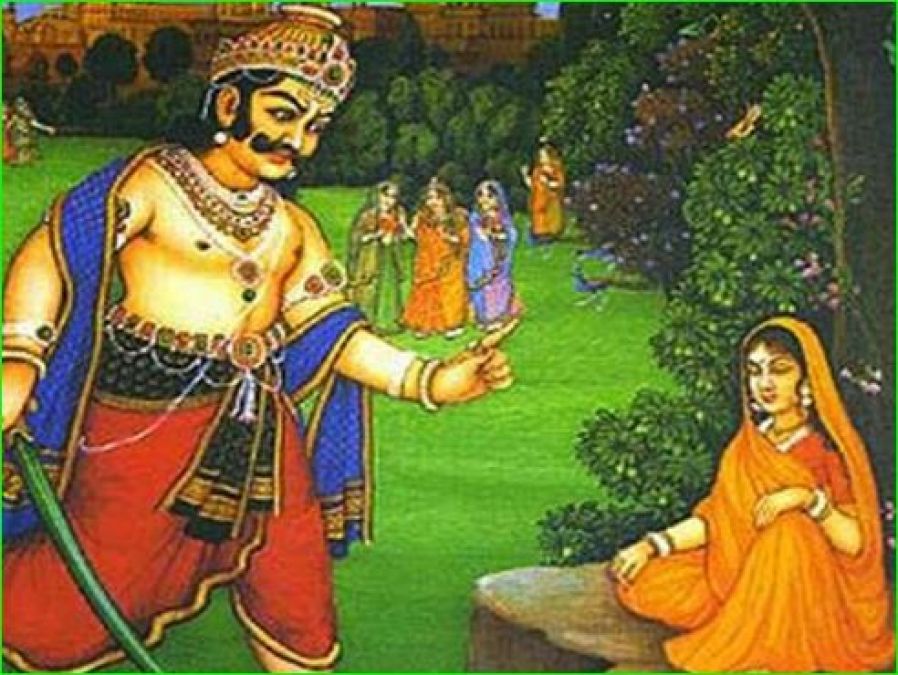
Ravana threatened Sita and kept her a captive in Lanka when she denied to marry him, but did not physically harm her or touch her against her will. Sita remained steadfast in her devotion to Rama and maintained her virtue and chastity during her imprisonment This part of the story emphasizes the strength of her character and the power of devotion.
Ravana's Family Tree

Ravana’s Sons: He had several sons, but the most well-known are Indrajit (also known as Meghanada or “the conqueror of Indra”) Atikaya & Akshay Kumar.
Ravana’s Brothers: Ravana had several brothers, including Kubera, Vibhishana (who later sided with Lord Rama), Kumbhakarna (known for his enormous size and appetite), and Ahiravana (a character from later folklore).
Ravana’s Wife: His principal wife was Mandodari, who is often depicted as a virtuous and wise queen.
Ravana’s Mother: Ravana’s mother’s name was Kaikesi.
Ravana’s Sister: Surpanakha is one of Ravana’s sisters, known for her role in instigating the conflict by her proposal to marry Rama and her subsequent disfigurement by Lakshmana.
Ravana’s Parents: His father’s name was Vishrava, who was a sage, and his mother’s name was Kaikesi, who was a demoness.
Why did Ravana kidnapped Sita Mata?
Ravana kidnapped Sita Mata, the wife of Lord Rama, primarily out of desire for power, vengeance, and lust.
Desire for Power: Ravana was a powerful and ambitious demon king who sought to expand his dominion. Sita was the wife of Lord Rama, who was an incarnation of the god Vishnu and a prince of Ayodhya. By abducting Sita, Ravana aimed to weaken his enemies and assert his dominance.
Vengeance: Ravana harbored animosity towards Lord Rama and his family, particularly after his sister Surpanakha was humiliated by Rama’s brother, Lakshmana. The desire for revenge against Rama and his lineage motivated Ravana to orchestrate the abduction of Sita.
Lust: Ravana was captivated by Sita’s beauty and wanted her for himself. His desire for Sita is often depicted as a significant factor in his decision to kidnap her, despite knowing the consequences.
How did Ravana Die?
In the epic Ramayana, Ravana’s demise is indeed preceded by Lord Rama’s realization of his weak point, his navel. Here’s a regenerated version:
“After numerous attempts, Lord Rama initially struggled to vanquish Ravana, for the demon king was deemed immortal. However, upon counsel from Vibhishana, Ravana’s righteous brother who sided with Rama, the secret of Ravana’s vulnerability was unveiled.
With resolve, Rama strung the sacred arrow upon his divine bow, causing a palpable fear to permeate the surroundings. As he aimed with unwavering determination, the very earth quivered in anticipation. The arrow, infused with celestial might, found its mark — Ravana’s invincible navel.
In a moment of divine retribution, the mighty demon king, once indomitable, succumbed to the inevitable. With a thunderous crash, Ravana collapsed upon the earth, his reign of tyranny forever halted.
What is Ravana Samhita?
The Ravana Samhita is a Sanskrit text that is attributed to Ravana. It is believed to contain knowledge and wisdom on various subjects, including astrology, palmistry, alchemy, and other occult sciences. The text is written in the form of a dialogue between Ravana and his disciple, Kubera.
The Ravana Samhita is primarily known for its astrological teachings, providing insights into horoscopes, planetary movements, and auspicious times for various activities. It also delves into the practice of palmistry, offering guidance on interpreting the lines and marks on a person’s palm to reveal their destiny and character traits.
While the exact origins and authenticity of the Ravana Samhita are debated among scholars, it remains a significant work in Hindu astrology and occult studies. Many practitioners consult this text for guidance and insights into various aspects of life, spirituality, and the cosmos.
